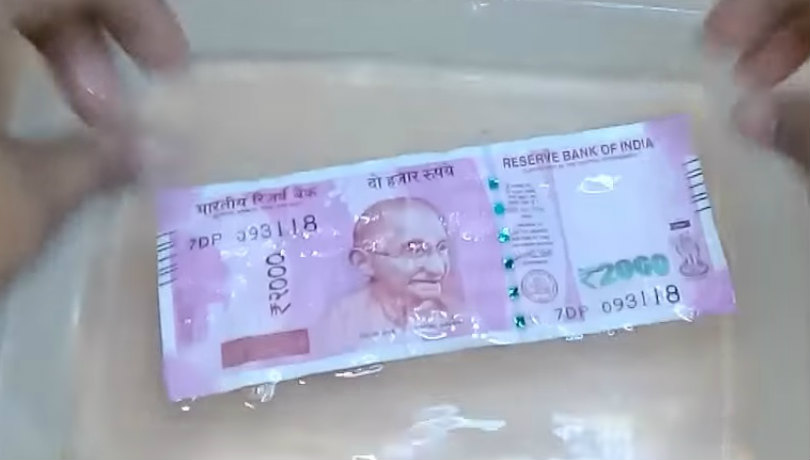With the introduction of the new notes, there has been no lack of people trying to come up with new ways to destroy said notes. Already on YouTube and other channels of Social media, there are dozens of videos of people crumpling, wetting, cutting up, burning, and otherwise manhandling the new INR 2000/- bank note.
And since India has been blessed with an ever-vigilant class always eager to find holes in the workings of the ‘Modi government’ (not to be confused with the ‘Government of India’), videos such as the above-mentioned have been the epicentre of the latest controversy.
Several questions were raised regarding the quality of printing and the long-term durability of the new denomination after multiple videos emerged of the notes losing colour when either soaked in water and rubbed with cotton, or wiped vigorously with a wet cloth.
The controversy grew to such extents within the space of a day that the Economic Affairs Secretary himself, Mr Shaktikanta Das, had to give a statement- ‘The new Currency notes lose colour when wet, because that’s the nature of the paper the notes are made from.’ He also pointed out that counterfeit notes are often printed using indelible inks which do not ‘run’ when wet.
Needless to say- his statement doesn’t seem to have gone down among the mischievous media as well as sections of the population less acquainted with the nature of currency, therefore necessitating this post in public interest.
1- Fiat Currency- such as the Indian Rupee- typically come with a limited life span. This ensures that they are regularly replaced by the people and decades-old series prints do not interfere with recent monetary policy. For example, the average life span of a $1 note is 6 years. That of a $10 note, even less at 4 years. The new INR 2000/- note- as well as the old INR 500/- or INR 1000/– have been designed to get damaged and need to be replaced within 8-10 years.
2- All new notes ‘lose’ colour when rubbed with a wet cloth- especially as in several of the videos, the people seen were almost vandalising the currency by soaking it in water for almost half an hour or rubbing it violently with wet cloth. Those of whom who have been caught in heavy showers might have noticed slight leaking of colours from the notes in their wallets. As new notes are coming fresh off the press and the time to enter circulation is shorter than ever, there will naturally be visible degree of dye leakage- especially since the video makers are abusing the notes.
3- In this aspect, we also find it necessary to warn the Public of the demerits of vandalising bank notes- especially since there is a shortage of notes at present. Not only do such actions destroy the value of the note quickly, they also necessitate frequent replacements. Also- One does not actually own the currency. It belongs to the government and is used merely to represent the wealth which one actually owns. Further, such a measure discourages people from hoarding cash for long periods of time.
In times such as this, it is imperative that the Population not get carried away by fear-mongering conducted by the malicious or the merely ignorant. Only by being calm and steadfast, can we make a difference.
